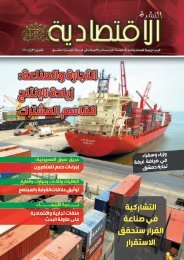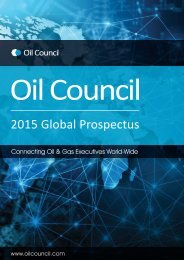SIGAR
2017-01-30qr
2017-01-30qr
You also want an ePaper? Increase the reach of your titles
YUMPU automatically turns print PDFs into web optimized ePapers that Google loves.
ECONOMIC AND SOCIAL DEVELOPMENT<br />
insufficient infrastructure, declining global commodities prices, and inadequate<br />
capacity at the Ministry of Mines and Petroleum (MOMP) have all<br />
hampered the development of this sector. 653 Additionally, the MOMP has<br />
lacked a permanent minister since March 2016, leading some to suggest that<br />
the national unity government has not prioritized this industry. 654<br />
USAID cited other issues contributing to investor uncertainty: regulations<br />
to support implementation of the new mining law passed in November<br />
2014 are still being developed; amendments to the law and several mineral<br />
tenders agreed to in 2010 and 2011 remain unsigned by President Ghani;<br />
and a combination of corporate income taxes, export and import duties,<br />
production royalties, and other charges that constitute an uncompetitive<br />
levy of about 80% on mineral production. 655<br />
Although geological surveys show that Afghanistan has significant mineral<br />
resources, mining has so far contributed only slightly to the country’s<br />
GDP. 656 Actual government receipts from minerals activity in FY 1394 (2015)<br />
were only about 38% of the budget projection. 657 In the first 11 months of<br />
FY 1395, actual receipts were AFN 1.2 billion (approximately $18.3 million)<br />
largely due to royalty fees and the sale of minerals. This is a 98.5% increase<br />
compared to the same period last year. 658 The Afghan government, however,<br />
had set a $400 million revenue target for the MOMP in 2016. 659<br />
Illegal Mining<br />
The MOMP contends illegal extraction is taking place at 1,400 mining sites<br />
across Afghanistan, but others estimate the country has 2,000–3,000 illegal<br />
sites. 660 Illegal mining steals non-renewable natural resources, damaging<br />
Afghanistan’s economic development. 661 The Afghan government estimates<br />
$300 million in revenues is lost annually by illegal mining, which not only<br />
denies Kabul much-needed funds, but also fuels the insurgency and drives<br />
criminality. 662 This quarter, the UN reported that the Taliban controls many<br />
illegal mining sites, particularly those located in Afghanistan’s south and<br />
east, which provides them a significant income stream. The Taliban are<br />
involved in illegal mining in three ways: extraction (control of mining operations),<br />
extortion (threatening or committing violence if not paid off), and as<br />
service providers (transport and smuggling). 663<br />
Hydrocarbons<br />
Afghanistan’s efforts to develop its oil and gas reserves focus on the Amu<br />
Darya Basin and Afghan-Tajik Basin, both in northern Afghanistan. 664<br />
Afghanistan has only small-scale topping plants—early-stage refineries that<br />
can process only limited petroleum components of crude oil—and remains<br />
heavily dependent on fuel imports. 665 Oil and gas represent roughly onefourth<br />
of all annual Afghan imports, or approximately $1.5 billion. 666<br />
USAID’s implementing partner for the now-completed Sheberghan gasdevelopment<br />
project reported that “sufficient levels of proven reserves<br />
REPORT TO THE UNITED STATES CONGRESS I JANUARY 30, 2017<br />
163







